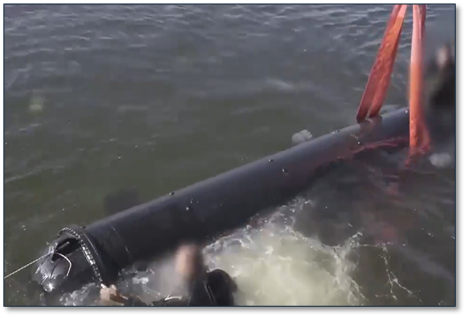AMBREY THREAT CIRCULAR > INCREASED THREAT TO CONTAINER SHIPPING IN THE BLACK SEA
This document has been approved for distribution by Ambrey Analytics Ltd.
Executive Summary
- Ceasefire Collapse: The unofficial maritime ceasefire between Russia and Ukraine has been broken, marking a return to active hostilities.
- Russian Port Strikes: Russian forces have launched coordinated attacks on the Ukrainian ports of Odesa, Chornomorsk, and Mykolaiv, targeting critical maritime infrastructure.
- Kerch Bridge Attack: Ukraine executed a combined sabotage and unmanned surface vehicle (USV) attack on the Kerch Bridge
- Ukrainian Deep-Strike Tactics: Ukraine’s non-linear warfare operation against Russian military airfields, involving UAVs concealed in containers, is likely to affect the maritime domain, particularly around cargo inspections and port security.
- Stalled Diplomacy: The latest round of negotiations in Istanbul has failed to deliver meaningful progress, suggesting continued volatility and risk in the Black Sea region.
Incidents

The unofficial maritime ceasefire between Russia and Ukraine has collapsed. Recent Russian strikes on Ukrainian ports, including Odesa, Chornomorsk, and Mykolaiv, combined with Ukrainian sabotage operations against the Kerch Bridge, followed by an attempted unmanned surface vehicle (USV) attack and the attacks on Sevastopol, mark an escalation following what had been a relatively low-pace six-week period. Additionally, Ukraine conducted a non-linear warfare attack on the Russian military airfields. Notably, unmanned aerial vehicles (UAVs) were concealed and transported using containerised cargo.

Analysis
While peace negotiations are stalling, Ambrey has recorded a marked increase in the targeting of maritime infrastructure by both parties. The sabotage of the Kerch Bridge stands out not only as an attack on a critical logistical route for Russian forces in Crimea but also as a third successful strike against a highly symbolic asset of President Putin’s tenure. He inaugurated the bridge, the largest infrastructure project completed under his leadership, by driving a railcar across it. While Ukraine claimed the attack was executed by a sabotage team, Russia alleged it involved an unmanned subsurface vehicle.
The deliberate choice of targets and the tempo of operations indicate that although talks are ongoing, the intensity of warfare continues to accelerate both onshore and offshore. Ambrey is aware that Russia has amassed a 50,000-strong force in the northeast of Ukraine, suggesting preparations for a summer offensive. In anticipation, Ukrainian forces have increased targeting of key bridges, energy infrastructure, and the Kerch Bridge itself to disrupt Russian logistics and reduce their operational capability.
Looking ahead, unless meaningful progress is made during the next round of negotiations in mid-June in Istanbul, Ambrey assesses that the threat to commercial shipping will remain elevated over the summer months. With more permissive weather conditions and calmer sea states, the deployment of unmanned surface and aerial vehicles is likely to increase, including strikes targeting hydrocarbon assets and critical maritime infrastructure.
In the short term, the Kremlin is expected to seek reprisals for recent Ukrainian UAV strikes deep inside Russian territory. These attacks demonstrate both a new level of Ukrainian capability and a willingness to conduct deep, non-linear warfare operations within Russia.
Though these strikes have so far focused on land-based targets, the effects are likely to spill into the maritime domain. Ukraine has launched quadcopter UAVs using containers transported by articulated lorries, including an incident targeting a military facility deep in the Russian eastern province.
Notably, Ukraine has released detailed footage and descriptions of the modus operandi and concealment methods used to transport and launch UAVs from inside Russian territory. This highly unusual disclosure was likely aimed at sowing panic and suspicion around any truck-transported containers within Russia and to reinforce the notion that all roads near military infrastructure are now potential vectors of attack. This will force the Kremlin to radically rethink its domestic security stance, which could lead to the diversion of resources away from the invasion of Ukraine.
Areas of concern
Ambrey has received credible information that Russian security services have increased checks on containerised cargo inland. It is a realistic possibility that these checks will be extended to cargo entering Russian ports in the Black Sea and Baltic Sea. Russian intelligence personnel are already known to board and search vessels awaiting transit through the Kerch Strait; these inspections are expected to become more frequent and more intrusive, with a particular focus on containers. Russia will likely escalate its targeting of containerised cargo bound for Ukraine. In the past, Russian forces have struck container ships and Ukrainian container terminals under the pretext of targeting dual-use goods or military equipment. The footage released by Ukrainian intelligence, showing UAVs hidden within a container, lends credence to such Russian claims and will likely be used to justify further military action against commercial container traffic.
AMBREY – For Every Seafarer, Every Vessel, Everywhere.
END OF DOCUMENT